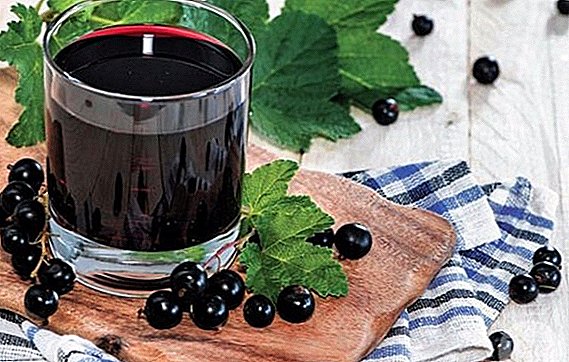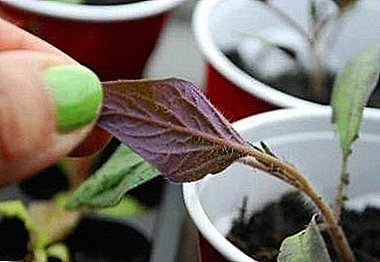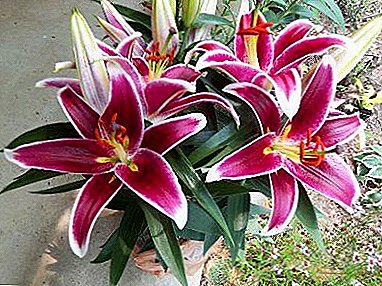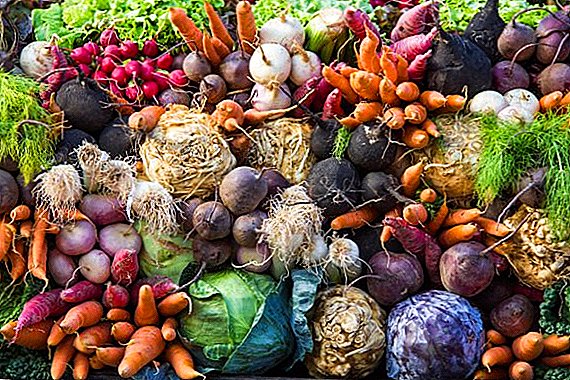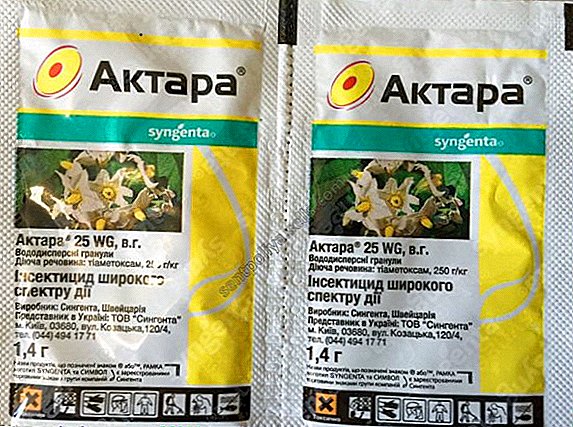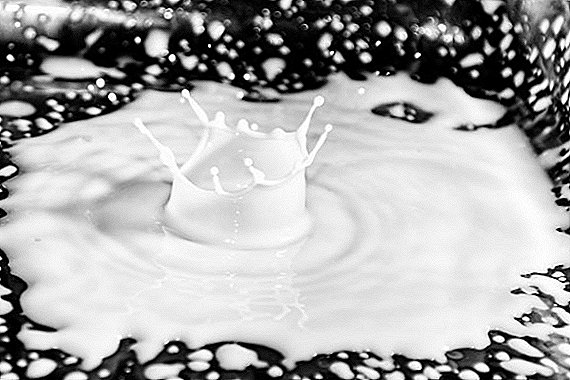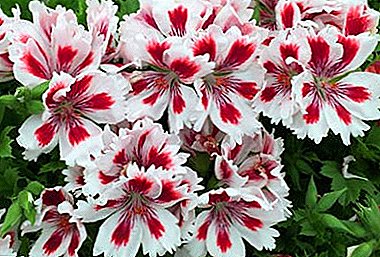
Royal Geranium is a houseplant with luxurious large (15 cm in diameter) flowers of various colors.
Caring for this representative flora is watering, feeding and timely pruning.
The article details and available for beginners florist tell about all the nuances of caring for this beautiful plant.
Growing conditions
Air
The air temperature in summer should be at least + 18-24 degrees. In autumn and winter, the temperature regime is maintained within + 17-19 degrees. But not more than +20 degrees. During the rest period, thermometer indicators should be from +12 to +14 degrees.
Lighting
 Royal Geranium - light-loving culture. It is better to place it on the southern windowsills. Provide auxiliary lighting in winter. Due to the lack of light, the stalks are strongly drawn out. Geranium does not tolerate direct sunlight. The leaves get burned. In the summer window pritenuyut.
Royal Geranium - light-loving culture. It is better to place it on the southern windowsills. Provide auxiliary lighting in winter. Due to the lack of light, the stalks are strongly drawn out. Geranium does not tolerate direct sunlight. The leaves get burned. In the summer window pritenuyut.
If a tree grows close to the window, a flower pot is placed on this window sill. The crown of the tree will block direct ultraviolet rays. Keeping geraniums in the shade is not recommended. It will grow, but does not form buds. Or bloom, but for a short period.
Humidity
Geranium tolerates high and low humidity. The plant has rough leaves that are not recommended to be sprayed. It is better to keep the culture in a room with moderate humidity.
The soil
Royal geraniums are planted in slightly acidic, well-drained soil.
Attention! The land should not be too fertile. The intake of nutrients in large quantities leads to an increase in green mass.
For planting, you can buy a special substrate or prepare it at home. Mix the components:
- Deciduous land - 2 parts.
- River sand -1 part.
- Sodland - 8 pieces.
The soil should be loose, well retain moisture and pass air.
Pot
Geraniums are usually planted in balcony containers. But the flower feels better in a close pot. Bulky vessels threaten to stagnate moisture, causing disease. Capacity is chosen from natural materials: clay, ceramics. In pots necessarily make drainage holes.
It is advisable to keep indoor culture in hanging pots.
How to care for a plant to bloom?
Watering
 One of the main rules for the care of geraniums is compliance with the water regime. The flower does not tolerate waterlogging. This leads to disease or death.
One of the main rules for the care of geraniums is compliance with the water regime. The flower does not tolerate waterlogging. This leads to disease or death.
Watering features:
- Use soft distilled water, pre-boiled or filtered. Cold tap water is not suitable.
- The temperature of the soil and water should be the same. She is kept in the room where the plant is located.
- Watering is carried out only through the pallet. Moisturizing on top is not permissible. This provokes soil consolidation and trunk rot.
Geranium is moistened by drying out the soil. In the heat of the water more often - in the morning and evening hours. Preferably before sun activity and after sunset. In winter, moisture is reduced. Enough one watering in the morning.
Important! For adult plants, the amount of liquid per watering at least 60 ml.
Moisturizing should be moderate. For geraniums, not only bays are harmful, but also moisture deficiency. Its lack leads to a lack of flowering.
Top dressing
For rapid and long flowering, royal geranium is regularly fertilized with mineral compounds. Make a one-component feeding:
- iodine;
- nitrogenous;
- potash;
- phosphoric.
 Nitrogen contributes to the development of the stem, leaves, plant roots. It is used in the spring months. For budding requires phosphorus. Its deficiency slows down the budding process. Potassium increases flower stamina. With its shortage, growth stops.
Nitrogen contributes to the development of the stem, leaves, plant roots. It is used in the spring months. For budding requires phosphorus. Its deficiency slows down the budding process. Potassium increases flower stamina. With its shortage, growth stops.
When blooming buds reduce the introduction of nitrogen fertilizers. Increase potash. There are complex compounds for sale that contain many minerals useful for geraniums:
- Manganese.
- Sulfur.
- Boron.
- Magnesium.
- Iron.
- Calcium.
- Zinc.
These substances stimulate growth and regular flowering.
Iodine is an essential element for the plant. Fertilizer features:
- Pre-moisten the substrate in a pot.
- Pour a drop of iodine into a liter of water.
- Add to the resulting solution 1ml of hydrogen peroxide.
- Sprinkle the flower around the edges of the container, avoiding the composition on the leaves.
Top dressing is carried out no more than 1 time in 3 weeks from May to September.
 In addition to iodine, vitamins B-B1, B-6, B-12 are used for geranium. Once every 3 years fertilized with plant or animal organics. It is made very carefully, because it can cause the death of the flower.
In addition to iodine, vitamins B-B1, B-6, B-12 are used for geranium. Once every 3 years fertilized with plant or animal organics. It is made very carefully, because it can cause the death of the flower.
Each florist must strictly follow the rules of dressing:
- Liquid fertilizers should be used only after irrigation to prevent the plant from burning.
- After making minerals, loosen the soil under the flower.
- You can not apply dressing 2 weeks before transplantation and after 1 week.
Sick plants do not fertilize.
Pruning for lush flowering
Many growers make the mistake of cutting the geranium in spring. She may stop blooming. To culture abundantly blossomed, pruning carried out in the fall and winter.
Often improper pruning leads to the formation of long stems that spoil the decorative appearance. That the krone was beautiful, follow a number of rules:
- Trimming the royal geranium, take into account its genetic features - it must be bushy and low.
- For cutting use disinfected sharp knife or pruner at the level of the leaf node.
- Cut sections are treated with charcoal or ground cinnamon powder.
- Inverted plant stems are completely removed.
- Pinching exercise with clean hands.
Pruning for lush flowering is done after geranium has flowered (usually at the end of August). The procedure is performed in 2 stages with an interval of one and a half months. So the plant is experiencing less stress.
In the video, see how to cut and pinch a plant for lush flowering:
A photo
In the photo below you can see how the royal geranium looks like.





Possible problems and their solution
With improper care flower growers can face various difficulties with geraniums. The actual question is the lack of flowering. The reasons:
- Very big pot.
- Temperature below normal (less than + 10 degrees).
- Too fertile soil.
- Poor or untimely pruning.
- Wrong selection of top dressing or lack thereof.
The appearance of the foliage is judged on the state of the flower. Foliage fades due to waterlogged soil. With a lack of light turns yellow.
The most common disease of geraniums is black leg. The trunk rots as a result of excessive moisture and high air temperature. The plant can not be saved, but you can try: cut the upper cuttings and plant them. The flower is removed along with the substrate, because it contains rotting products.
Due to an excess of moisture, the leaves and the trunk are affected by gray rot: brown spots and gray scurf appear. Treatment:
- transplanting plants in fresh ground;
- removal of affected areas;
- spraying fungicide.
Late blight is a fungus that leads to wilt, then to the death of geranium. It occurs as a result of non-compliance with irrigation or contaminated soil.
 Symptoms of the disease:
Symptoms of the disease:
- Pale color of leaves.
- Slow development.
- Full stop of growth.
Treatment is effective only in the initial stage of the disease. The affected parts are cut, the flower is treated with Bordeaux mixture.
Sometimes the culture is attacked by pests:
- whitefly;
- aphid;
- mite.
To get rid of parasites, the underside of the leaves is rubbed with chamomile extract. After a few hours, the solution is washed off. To destroy the whitefly use drugs:
- Fufanol
- Actellic.
- Bison
Watch a video about the pests and diseases of pelargonium and how to deal with them:
Royal geranium is a capricious and capricious culture. To enjoy its wild flowering, you need to provide comfortable conditions for development, properly water and fertilize, and carry out high-quality and timely pruning.



